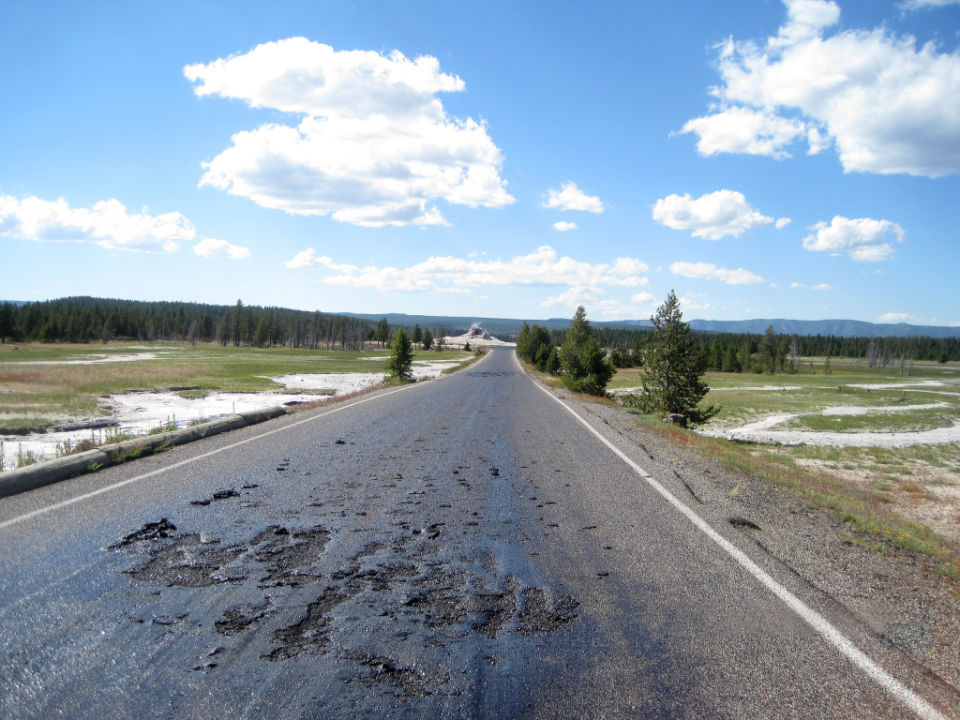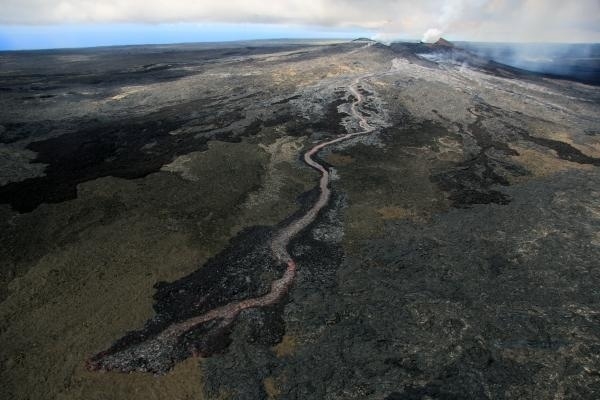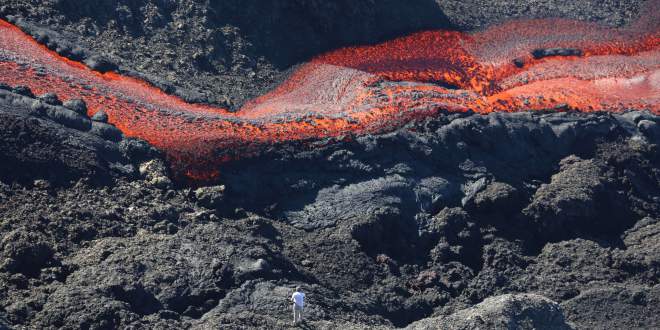
© National park ServiceFirehole Lake Drive superheated by surrounding thermals
The ever-changing thermal geology of Yellowstone National Park has created a hot spot that melted an asphalt road and closed access to popular geysers and other attractions at the height of tourist season, officials said Thursday.
As they examined possible fixes, park officials warned visitors not to hike into the affected area, where the danger of stepping through solid-looking soil into boiling-hot water was high.
"There are plenty of other great places to see thermal features in the park," Yellowstone spokesman Al Nash said. "I wouldn't risk personal injury to see these during this temporary closure."
Naturally changing thermal features often damage Yellowstone's roads and boardwalks. Steaming potholes in asphalt roads and parking lots - marked off by traffic cones - are fairly common curiosities.
However,
the damage to Firehole Lake Drive is unusually severe and could take several days to fix. The 3.3-mile loop six miles north of Old Faithful takes visitors past Great Fountain Geyser, White Dome Geyser and Firehole Lake.
Unusually warm weather for Yellowstone - with high temperatures in the mid-80s - has contributed to turning the road into a hot, sticky mess.
"We've got some ideas. We're going to try them. Our maintenance staff has really looked at the issue," Nash said.


Comment: Previously thought to be extensions of a single volcano, Mauna Loa is actually flanked by a curving line of individual volcanoes that include Kilauea, Mauna Kea and Kohala. Its summit is 56,000 feet above its base on the sea floor. Four distinct earthquake swarms have occurred since March 2013, all less than magnitude 2.2, save one that registered 3.5 on May 9, 2014, and have been occurring in the same areas of the volcano as those in the years prior to 1984. They are, so far, consistent with a model requiring rocks around the core to adjust to stress changes within the core. While Mauna Loa is not located along the Ring of Fire, it is likely that whatever disturbances and earth changes provoking recent Pac Rim activity are also escalating changes in other areas under the ocean.